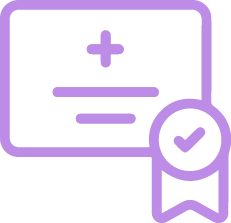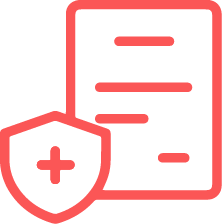In the pharmaceutical industry, a Quality Management System (QMS) is the backbone of your compliance and quality efforts. Whether you are managing deviations, CAPAs, audits, training, or documentation, your QMS directly supports processes that affect product quality and patient safety.
If your QMS is software-based, it needs to be validated. That means demonstrating, with documented evidence, that the system does what it is supposed to do and does it consistently.
This is not just good practice; it is a regulatory requirement. Authorities such as the FDA and EMA expect that any computerized system used in GxP processes (Good Manufacturing Practice, Good Clinical Practice, etc.) is validated appropriately.
In this post, we will explore what QMS validation means, why it matters, and how to do it using best practices from Annex 11, 21 CFR Part 11, and GAMP 5.
Why Validation Matters
Computer Software Assurance (CSA) ensures your system reliably performs as intended, producing accurate, trustworthy data and supporting quality and compliance activities. If your QMS tracks deviations, manages SOPs, or controls CAPA processes, any failure in the system could directly impact compliance or product quality.
Without validation:
- critical workflows may fail
- deviations or CAPAs may be mismanaged
- documents or training records may be incomplete
- compliance or product quality could be at risk
Validating your QMS ensures:
- Expected system behavior
- Secure, traceable electronic records
- Compliant audit trails and signatures
- Reliable data for decision-making
It is not just a regulatory checkbox. It is a key part of risk management, data integrity, and protecting your product, patients, and company.
Understanding the Regulatory Landscape
Several key regulatory documents define what is expected when validating computerized systems. QMS validation is guided by multiple frameworks, including:
- EU GMP Annex 11: Computerized systems
- 21 CFR Part 11 (FDA): Electronic records and electronic signatures
- GAMP 5: Practical guidance for risk-based validation
- ICH E6(R3): GCP for clinical trial systems
- ISO 13485: QMS for medical device manufacturers
- EU MDR / IVDR: Software in device and diagnostic contexts
💡 Tip: Not all systems are subject to the same regulations. Some processes may only require ISO 13485, while others that support GMP or clinical activities must also comply with Annex 11 and 21 CFR Part 11. Focus on your QMS scope and intended use, and apply the frameworks relevant to the GxP processes your QMS supports.
Do All QMS Tools Need Validation?
Yes. If the QMS is used for GxP processes, it must be validated.
Many QMS vendors perform extensive internal testing and provide validation documentation, which might include:
- Functional specifications
- Installation test records
- System validation summaries
This is often referred to as vendor validation. While it does not replace your responsibility, it can significantly reduce effort. You can reuse or reference vendor documentation to support your own validation process, especially with a risk-based approach.
📌 Remember: validation is about ensuring the system works for your intended use, in your environment. Even if the vendor validates their platform, you are responsible for making sure your specific configuration is fit for purpose.
What Makes QMS Validation Different
Unlike an ERP or MES, which focus on transactional or production control, a QMS enforces quality processes.
Validation must confirm that your system reliably supports:
- Document control (SOP versioning, obsoleting old documents, approvals)
- Electronic signatures (unique, secure, compliant)
- Quality event workflows (deviations, CAPAs, change controls, enforced routing and approvals)
- Master data (event types, document categories, templates)
- Linking and traceability (e.g. deviations linked to CAPAs, SOP updates linked to training)
- Notifications and escalations (correct tasks assigned at correct steps)
- Access control (role-based permissions for approval, editing, closing records)
- Audit trails (automatic, secure, tamper-evident)
These functions are core to a QMS, and a failure in any of them can compromise compliance or product quality.
How to Validate Your QMS: A Practical Approach
Let’s walk through a simplified, yet compliant, approach to validating a QMS. Instead of a full validation checklist, we’ll highlight the critical areas and practical steps to ensure your QMS supports real-world quality processes.
Depending on the system’s GAMP category, different testing activities may be needed, but here we focus on the critical functional areas specific to a QMS.

1. Planning and Risk Assessment
Start with a Validation Plan:
- Define scope, objectives, and roles
- Use a risk-based approach aligned with GAMP 5
- Identify critical processes such as deviations, CAPAs, training, and change control
- Categorize your system (most QMS = GAMP Category 4, configurable)
💡 Tip: Validation effort should scale with system complexity. Highly customised platforms require more extensive testing and documentation, while simpler configurable systems may need less.
2. Defining Requirements and Prioritizing Risks
Define what the system must achieve from a user perspective in a User Requirements Specification (URS). Focus on your processes, not generic functions.
Examples:
- “Must enforce version control for all SOPs and prevent release of obsolete versions.”
- “CAPA cannot be closed without completing root cause analysis and effectiveness check.”
- “SOP revision triggers reassignment of training to all affected personnel.”
Next, perform a functional risk assessment to prioritize based on:
- GxP-relevance: Critical processes like CAPA management, change control, and training may be high-risk; low-risk functions could include dashboard customization.
- Severity and likelihood of failure: For example, failing to capture a root cause → high severity; minor UI misalignment → low severity.
- Configurable vs. custom functionality: Configurable workflows or document categories often need straightforward checks; custom scripts, integrations, or complex reporting may need deeper testing.
Finally, document the Configuration Specification (CS), describing setup of:
- Workflows, roles, permissions
- Master data: document types, event types, templates
- Linking rules (e.g., deviation → CAPA)
3. Configuring Your System
Once your requirements are clearly defined, the next step is to configure your QMS according to your documented needs. Most modern QMS platforms allow a wide degree of configurability, without custom coding, making them, as we have established before, Category 4 systems in most cases.
The configuration might include:
- Defining workflows (e.g., CAPA routing, change control approval chains)
- Creating mandatory fields for key objects like deviations or impact assessments
- Setting user roles and permissions
- Customizing notification rules and record templates
- Configuring links between related records (e.g., deviation ↔ CAPA)
💡 Tip: Keep screenshots, configuration exports, or audit logs showing how key settings were applied—this can support traceability and help during audits.
This stage ensures that what you plan to test is already implemented and ready to be challenged in testing.
4. Testing the System – Focus on Critical Functional Areas
Validation demonstrates that your QMS consistently enforces your quality processes. As with any computerized system, the types and extent of testing — unit testing, integration testing, functional testing, and user acceptance testing — are defined based on the system’s GAMP category and the associated risk. For a typical QMS (usually a configurable, Category 4 system), the main focus is on critical functional areas that directly impact compliance, product quality, and patient safety.
This ensures that your QMS supports real-world workflows, enforces quality processes reliably, and meets regulatory expectations, without spending unnecessary effort on low-risk functions.
Critical Function Areas to Test
The testing required for validation of a QMS depends on the functionalities you expect and the workflows you intend to support. Testing should focus on the system’s ability to consistently enforce your quality processes, not just its technical capabilities.
Here are some critical functional areas commonly tested during QMS validation:
- Version control on Documents: SOP and policies correctly versioned, and obsolete versions correctly managed.
- E-signature approvals: Validate that approvals are captured securely and comply with 21 CFR Part 11 and Annex 11.
- Workflows for CAPAs, Change controls or other quality events: Confirm correct routing, status transitions, and required approvals
- Linking between related objects: ensure the system correctly links related events. For example: Deviations and CAPAs, Change Controls and impact assessments, root cause and deviations.
- Notifications or alerts: Test that assigned users are alerted at the right steps (e.g. when approval is pending)
- Enforcement of required fields: Ensure that critical data fields (like root cause, justification, etc.) cannot be skipped or left blank
- Timely record creation: Confirm that quality records are entered promptly and that the system supports date/time stamping appropriately
- Training assignments: Ensure SOP updates automatically trigger training tasks and completion tracking
- Metrics and reporting: Ensure key quality metrics (e.g., CAPA aging, deviation trends) are accurate and reflect real data.
- Audit and periodic review support: Confirm the system can generate reports or views needed for management review, internal audits, or periodic system checks.
- Data retention & archival: Ensure that historical records, obsolete versions, and closed events are stored and retrievable per regulatory and company policy.
- System integrations: If your QMS links to other systems (DMS, ERP, ALM), ensure data flows and triggers work correctly. Test the interfaces:
- Pulling SOPs from a Document Management System for training assignments
- Linking validation test cases or requirements in an ALM tool like Jira, TestRail, or Polarion
Tip: All tests should trace back to URS and CS, showing that the system supports real-world quality processes, not just technical capabilities.
5. Releasing the System
After testing:
- Document results in a Validation Summary Report
- Train users on validated workflows
- Implement change control and periodic review
- Update SOPs as necessary
Validation is ongoing, not a one-time event. Any changes must be assessed for impact and revalidated if needed.
6. Maintaining the Validated State
Validation is not a one-time event. You’ll need ongoing controls to keep the system compliant:
- Change Control: Any updates, upgrades, or new features must be assessed for impact and revalidated as needed.
- Periodic Review: At defined intervals, confirm that the system still meets your needs and is performing as expected.
- Incident Management: Track and resolve any issues or deviations related to the system.
Critical Compliance Controls
As part of your validation, make sure the QMS includes the following features to support regulatory expectations:
- Audit Trails: Automatically record all critical changes with user, timestamp, and reason.
- Electronic Signatures: Unique, secure, attributable, and compliant with 21 CFR Part 11.
- Access Controls: Role-based permissions with clear user management procedures.
- Data Integrity: Follow ALCOA+ principles:
- Attributable, Legible, Contemporaneous, Original, Accurate
- Plus: Complete, Consistent, Enduring, Available
Final Thoughts
Validating a QMS might seem like a technical or IT-heavy task, but it’s a key element of your pharmaceutical quality system. Even if you're not a validation expert, understanding the basics can help you manage risks, avoid audit findings, and ensure reliable decision-making.
Here’s what to remember:
- If your QMS supports GxP activities, you are responsible for validating it
- Leverage vendor documentation when possible, but tailor validation to your intended use
- Use a clear, risk-based approach aligned with Annex 11, 21 CFR Part 11, and GAMP 5
- Focus on your workflows; validation is not just about ticking boxes, but about making sure your system supports your real-world processes effectively and reliably.
With the right strategy, validation isn’t a burden, it’s an investment in trust, control, and compliance.
If you need guidance or hands-on support, we at QbD are happy to help. Whether it’s planning, documentation, testing, or maintaining validated state, we bring the expertise so you can focus on delivering safe, high-quality products.
👉 Need support validating your QMS? Contact us today to discuss how we can help.






















.jpg)







